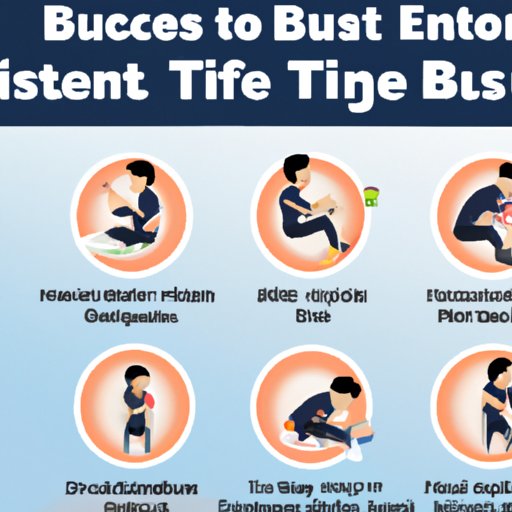Introduction
Exercising is an important part of a healthy lifestyle. But if you’ve recently eaten, it can be confusing to know how long you should wait before working out. This article will explore the effects of exercising on a full stomach, provide tips for working out after eating, and offer guidance on when to exercise after eating. Read on to learn more.
Examining the Effects of Exercise on a Full Stomach
Before diving into when to exercise after eating, it’s important to understand the potential risks associated with exercising on a full stomach. When your stomach is full and you start exercising, your body has to work harder to process both digestion and physical activity. This can lead to cramping, nausea, and even vomiting. It can also impair your performance, as your body is busy digesting food instead of focusing on the workout.
On the other hand, waiting to exercise after eating can be beneficial in many ways. Giving your body some time to digest before starting an intense workout can help you perform better and reduce the risk of digestive problems. Additionally, having a snack or light meal before exercising can provide extra energy and help you push through your workout.

Tips for Working Out After Eating
If you decide to eat before exercising, there are several things you can do to make sure you’re taking proper care of your body. Here are some tips to keep in mind:
- Eat smaller meals. Eating too much before exercising can lead to digestive issues. To avoid this, stick to smaller meals that are easy to digest.
- Choose healthy foods. Eating healthy foods can help fuel your workouts and give you the energy you need to get through them. Reach for nutritious snacks like fruits, nuts, and yogurt.
- Hydrate before and after exercise. Staying hydrated is key to keeping your body healthy and energized. Make sure to drink plenty of water before and after your workouts.

When to Exercise After Eating: A Guide
Now that you know the risks and benefits of exercising on a full stomach, let’s look at when to exercise after eating. Here’s a general guide to help you decide when to start your workout:
- Immediately after eating. If you’ve had a light snack, you can usually start exercising right away. Just make sure to listen to your body and take it slow if you’re feeling any discomfort.
- 30 minutes after eating. If you’ve had a larger meal, it’s best to wait at least 30 minutes before starting your workout. This gives your body enough time to digest the food and start burning calories.
- 1-2 hours after eating. For very large meals, it’s best to wait 1-2 hours before exercising. This gives your body enough time to fully digest the food before you start your workout.
How Long Should You Wait Before Exercising After Eating?
When deciding how long to wait before exercising after eating, it’s important to consider several factors. These include the size of your meal, the type of exercise you’re doing, and how you’re feeling. Generally speaking, it’s best to wait at least 30 minutes after eating before starting any intense physical activity.
What Is the Best Time to Exercise After a Meal?
The best time to exercise after a meal depends on several factors, including the size and type of meal, the type of exercise you’re doing, and how you’re feeling. If you’ve had a light snack, you can usually start exercising right away. For larger meals, it’s best to wait 1-2 hours before starting your workout. Make sure to listen to your body and take it slow if you’re feeling any discomfort.
Conclusion
Exercising on a full stomach can lead to digestive issues and impaired performance. To avoid these issues, it’s important to understand the risks and benefits of exercising on a full stomach, as well as tips for working out after eating. Depending on the size and type of meal, it’s generally best to wait at least 30 minutes before starting any intense physical activity. By following these guidelines, you can ensure that you’re taking proper care of your body and getting the most out of your workouts.
(Note: Is this article not meeting your expectations? Do you have knowledge or insights to share? Unlock new opportunities and expand your reach by joining our authors team. Click Registration to join us and share your expertise with our readers.)
